Effective Methods for Hanging Heavy Pictures on Sheetrock
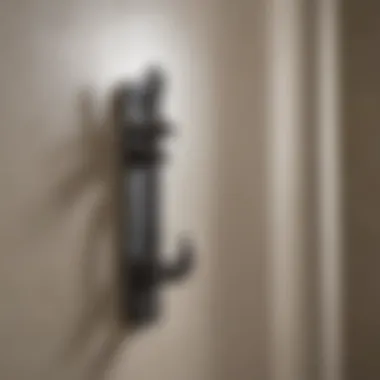
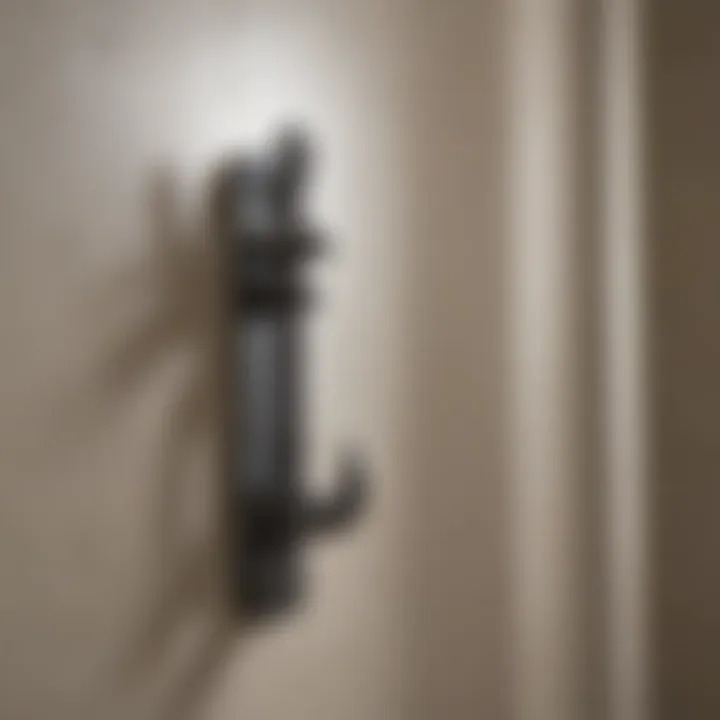
Intro
Hanging heavy pictures on sheetrock presents a unique challenge that many face when decorating their homes. It's not simply about finding the right spot on the wall; it requires a thoughtful approach to ensure your cherished artwork doesn’t come crashing down and cause damage.
Understanding the right methods and tools is essential in this endeavor. Choosing the correct hardware, locating walls’ studs, and focusing on weight distribution are vital steps in ensuring both safety and aesthetic appeal. In this guide, we will cover strategies to hang substantial pieces, and not only will you feel more confident, but also you will enhance the beauty of your living space.
Understanding Sheetrock
Before we dive into the nitty-gritty, it’s worth understanding what sheetrock is. This material, also known as drywall, is made from gypsum plaster sandwiched between two sheets of thick paper. It serves as a popular wall covering due to its affordability and ease of installation. However, while it’s great for many applications, it can be less supportive when it comes to significant weight.
Why Weight Matters
Many folks might underestimate the implications of weight when it comes to wall decor. Heavy pieces, like large frames, mirrors, or canvases, need attention beyond just superficial hanging methods. If the weight isn’t properly supported, it can lead to damaged walls or worse, a ruinous fall that could harm you or your belongings.
Essential Hardware
Selecting the right anchors and hooks can make all the difference. Some important types of anchors to consider include:
- Toggle Bolts: Perfect for heavy items; they spread the load against the back of the drywall.
- Molly Bolts: Good for medium-to-heavy weights, they expand behind the wall.
- Picture Hanging Hooks: These are effective for lighter frames, designed to hold considerable weight without damaging the drywall.
Before heading off to the hardware store, gauge the weight of your picture or mirror. This will help you determine which fastener is needed.
Studs and Their Importance
Finding studs is one of the most critical steps in hanging heavy items. These wooden or steel supports behind your drywall provide the strongest anchoring points. To locate them, you can use a stud finder or even knock on the wall—your ears will help identify the hollow sound between stud placements.
Marking and Drilling
Once you’ve located the studs, use a pencil to mark their positions. Measure the height at which you want to hang your picture, and then make sure the anchor is secure and properly placed.
Here are tips for drilling:
- Always use a drill bit suitable for the anchor you selected.
- Start with a smaller bit for accuracy.
- Don’t force the drill; let it do the work.
Important Note: Always wear protective eyewear when drilling into walls!
Safety Considerations
Safety is paramount when engaging in any DIY home project. Make sure you:
- Use a ladder for reaching high areas.
- Double-check the weight limits of your hardware.
- Consider the environment; avoid hanging pictures in areas where they could be bumped or jostled, such as high-traffic zones of your home.
Final Thoughts
In summary, hanging heavy pictures on sheetrock does require effort, but with the right strategy and tools, it can be a straightforward task. Understanding the nuances of weight, selecting appropriate hardware, and knowing how to find and utilize studs ensures both the beauty and security of your wall decor. As you embark on this home decor journey, remember these tips. Your walls will not only tell your story but also stand strong in supporting cherished memories.
Understanding Sheetrock
When it comes to hanging heavy pictures, having a good grip on the material you’re working with is pivotal. Sheetrock, often synonymous with drywall, serves as the foundation for many homes. In this section, we’ll delve into what Sheetrock is, its characteristics, and its attributes as they pertain to the task at hand.
What is Sheetrock?
Sheetrock is the commercial name for a type of gypsum board, which consists of a core made of gypsum sandwiched between two sheets of heavy paper or fiberglass. This construction provides rigidity and sound absorption. It's lightweight yet strong enough for most residential applications. This is why it’s ubiquitous in modern construction. Basically, it’s the go-to for walls and ceilings in countless homes and offices around the globe. Knowing this, you can appreciate how crucial it is for stability when hanging heavier items.
If you think about it, when you hammer a nail into your wall, you’re not just creating a hook for your picture; you’re relying on the integrity of Sheetrock to hold that weight. Without a proper understanding of what Sheetrock can and cannot handle, you might find yourself staring at a picture laying on the floor rather than on the wall.
Properties and Limitations
Sheetrock has a number of favorable properties. For one, it’s relatively easy to cut and install, which makes it a popular choice for builders. Here are a few notable points:
- Weight Distribution: While lightweight, it can accommodate a fair amount of weight if properly supported—especially when using studs or heavy-duty anchors.
- Fire Resistance: Certain types of Sheetrock, like fire-rated boards, can provide extra protection. This kind can be beneficial where fire safety is a concern.
- Sound Dampening: The material inherently helps to minimize sound transmission, creating a more peaceful environment in your living space.
However, it’s essential to note its limitations as well. for example:
- Moisture Sensitivity: Standard Sheetrock can suffer in high-moisture areas. It’s not the wisest choice in bathrooms or kitchens without special treatment.
- Structural Integrity: While good for hanging lightweight frames, when you go heavy, you’ll need to ensure you’re using the right hardware and finding the studs. Not doing this could result in damage to the wall and your precious picture.
"Understanding the properties of Sheetrock can save you from an unexpected crash—both figuratively and literally."
Being acquainted with the attributes and vulnerabilities of Sheetrock equips you with the information needed to choose proper hanging methods. It’s not just about aesthetics; it’s about creating a lasting solution that supports your prized pictures securely.
Assessing Picture Weight and Size
When undertaking the task of hanging heavy pictures on Sheetrock, it is crucial to assess both the weight and the size of the artwork. Understanding these factors will not only help you choose the right tools and techniques but can also prevent future headaches, such as sagging frames or, worse, damaged walls. A well-planned approach will enhance both safety and aesthetics in your home.
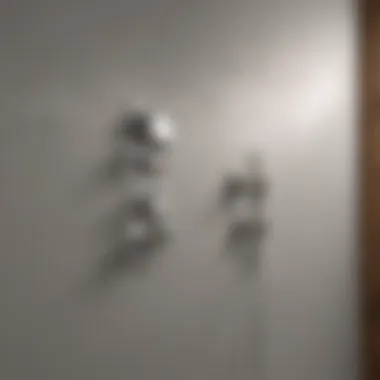
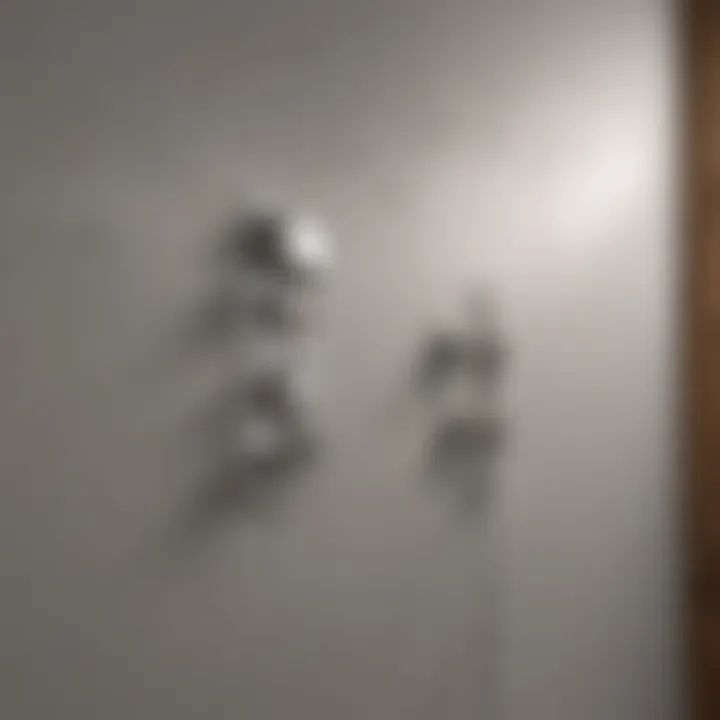
Why Weight Matters
The weight of a picture dramatically influences how it should be hung. A lightweight piece might only need a basic nail or hook. On the other hand, heavier items demand a more robust approach, possibly using wall anchors or screws directly into studs.
Here are some critical considerations regarding weight:
- Load Capacity: Each hanging system, whether it’s a simple hook or a more complex wall anchor, has a load capacity. It’s vital to understand this when matching the hardware to your artwork.
- Distribution of Stress: Heavier pieces exert more force on the wall, which can lead to bowing or cracking of the Sheetrock if not done correctly. This means it’s not just the weight itself, but how that weight is distributed that matters.
- Long-Term Stability: If the weight is more than what the fasteners or wall can safely bear, the result may be catastrophic. Take, for instance, Art Deco metal sculptures, which may provide an attractive look but also pose significant challenges if misjudged.
"Never underestimate the importance of weight—doing so can cost you both art and drywall."
Measuring Dimensions Accurately
Accurate measurements help in determining not just the right placement of the picture, but also play a role in understanding how it relates aesthetically to the surrounding space. Here’s how to measure properly:
- Height and Width: Knowing the exact dimensions of the picture is straightforward but vital. Use a tape measure, ensuring you take measurements from the highest point to the bottom and side to side.
- Consider the Frame: Sometimes, the frame bears almost as much significance as the piece itself. Ensure to measure its dimensions accurately, as this will alter the overall visual impact once it’s on the wall.
- Visual Proportion: Gauge how your planned picture will appear in relation to other items in the room, such as furniture and other artworks. An oversized painting can dominate a small room, while similarly, a small picture may get lost on a large wall.
- Placement Planning: Identify where you want to hang the picture. Using a pencil, mark the wall lightly where the center of the artwork will go, helping you visualize the space more effectively.
By taking time to account for both weight and size, you’re setting the stage for a successful hanging experience, one that will look professional and last for years.
Choosing the Right Hardware
When it comes to hanging heavy pictures on sheetrock, the significance of choosing the right hardware cannot be overstated. This choice profoundly impacts not just the aesthetic appeal of your space but also the safety and integrity of your wall. With the proper hardware, you can avoid unfortunate mishaps, like your prized artwork crashing to the floor after a sudden jolt from a door slam or an enthusiastic pet.
The stakes are high when you start lifting weighty pieces, especially those that carry sentimental value. Not only does sturdiness matter, but compatibility with your wall conditions is crucial. Finding the right balance between load capacity and wall suitability leads to a secure installation that stands the test of time.
Types of Wall Anchors
Understanding the various types of wall anchors available provides a solid foundation for secure installations. Here are a few popular options:
- Plastic Expansion Anchors: These basic anchors are easy to use and pop into place with minimal effort. A good fit for lightweight pictures, they can be flimsy with heavier frames.
- Metal Toggle Bolts: Known for their exceptional strength, toggle bolts can hold significant weight on sheetrock. When installed, the toggle spreads out behind the wall, creating a secure grip, perfect for larger pieces.
- Molley Bolts: These nifty fasteners expand when you insert the screw, making them reliable for medium-weight items. They offer more stability than plastic anchors, thus helping in distributing the weight more evenly.
- Self-Drilling Anchors: These are like the multitool of anchors. They do not require a pre-drilled hole and can handle a decent amount of weight, making them very convenient for quick installations.
In selecting an anchor, it’s essential to consult the packaging for weight limits and appropriate wall types. Doing so makes a big difference in how well your chosen option will perform.
Heavy-Duty Picture Hangers
Heavy-duty picture hangers represent a category that often holds the key to success when it comes to securely hanging substantial artwork. Here, you can find a diverse range of options designed for strength and durability:
- Hanging Strips: Brands like 3M offer adhesive strips that can support quite a bit of weight without any wall damage. They're best for those who prefer a no-drill approach but do check the specified weight limits.
- D-Rings and Wire Hangers: A classic option that features a D-ring on the back of the frame. This design spreads the weight evenly, providing a strong anchor point that keeps your artwork level.
- Heavy-Duty Hooks: Available in various strengths, these hooks can support multiple pounds. Choose hooks that are rated for more than the expected weight of your picture for extra peace of mind.
With the proper hardware in place, your pieces can thrive gracefully on the walls of your home, creating an environment that is both visually appealing and immensely practical. Remember that selecting credible hardware is not just a matter of convenience; it’s all about safeguarding your cherished possessions well.
"Choose your tools wisely, for the right hardware can make the difference between art proudly displayed or disaster at your feet."
Preparing the Wall
When it comes to hanging heavy pictures on Sheetrock, the preparation of the wall plays a pivotal role. A lot is riding on how well you set this stage, ensuring that your art not only looks good but also remains securely in place over time. Ignoring this step can lead to disaster, as artworks may tilt, shift, or even fall off the wall entirely—definitely not the impression you want to make.
Inspecting for Studs
Before you even think about hammering in that nail or screwing in a fastener, you must locate those studs behind the Sheetrock. Studs are like the backbone of your wall structure, providing the support needed to hold heavy frames. To find them, using a stud finder can be a game-changer, making the process smooth and efficient.
- If you prefer a more hands-on approach, you can gently knock on the wall with your knuckles and listen for a hollow sound versus a solid thud. Generally, studs are 16 or 24 inches apart, but it may vary depending on your home's construction.
- Once you find your studs, mark their locations with a pencil. You'll want to double-check their sturdiness by applying slight pressure.
Finding these key junctures will help you determine where you can place your weighty pieces without risking damage to both the wall and the art itself.
Finding Optimal Placement
Now that you've pinpointed the studs, the next step is figuring out where to hang your heavy picture. This is not just a matter of aesthetics but also involves a bit of strategy. The aim is to combine functionality and beauty in a single delightful arrangement.
Consider Aesthetics
When it comes to aesthetics, the placement of your artwork can dramatically impact the ambience of a room. One essential aspect to consider is the height at which you hang your pieces. An artwork hung too high or too low can make a space feel unbalanced or awkward.
- Key Characteristic: Traditionally, art is best viewed at eye level, around 57 to 60 inches from the floor. This height maintains harmony with other visual elements in the room, creating a sense of cohesion.
- Benefit: A well-placed piece not only grabs attention but also adds depth and dynamic energy to your surroundings.
- Unique Feature: Choosing to integrate the work with other items in the room—such as furniture or other artworks—enhances the overall theme, making it a focal point that resonates with the decor.
But be careful; overload your walls with too many pieces, and it could become chaotic. Finding that sweet spot—an optimal balance—is crucial.
Mind Traffic Flow
Another essential element of placement is keeping in mind the traffic flow. Sure, that massive painting might look great above the sofa, but if people have to duck under it every time they walk past, it can spoil the atmosphere.
- Key Characteristic: The height and width of the art should align with the room's natural pathways. You want to ensure that it neither obstructs movement nor distracts anyone navigating through the space.
- Benefit: A well-positioned picture allows for easy movement, contributing to a comfortable experience in the room.
- Unique Feature: Moreover, arranging your art in such a way that it promotes natural conversation or engagement creates a welcoming environment that enhances the spatial experience.
In sum, the way you prepare the wall sets you up for success. By thoughtfully inspecting studs and finding the right positioning, you ensure safe and beautiful displays of your artwork that will surely stand the test of time—both functionally and aesthetically.
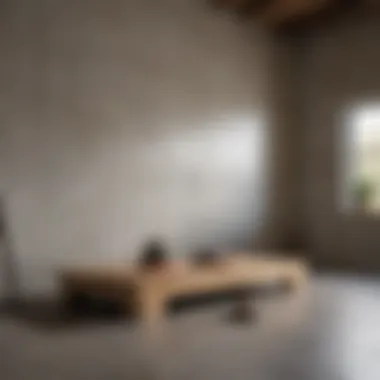
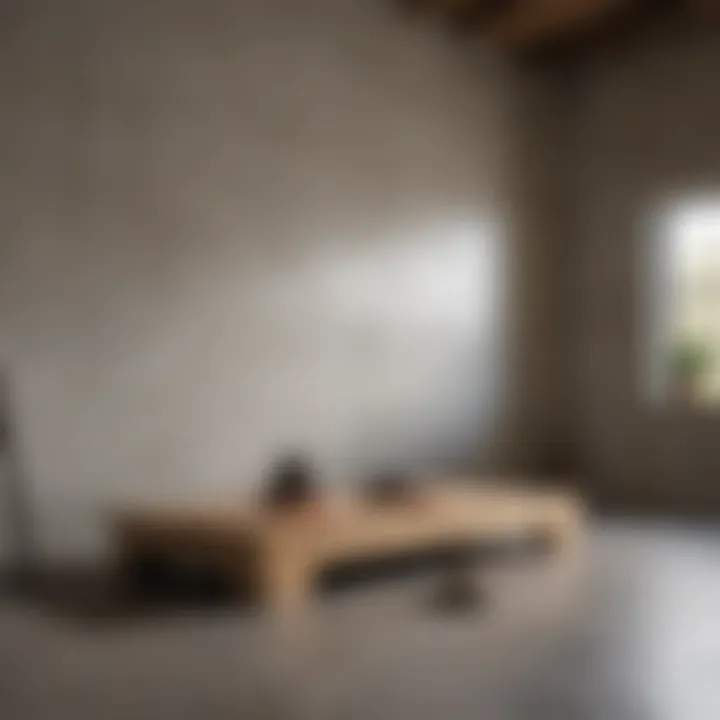
Installation Techniques
Hanging heavy pictures on Sheetrock requires more than just a sturdy frame and a hammer. The importance of installation techniques cannot be overstated when it comes to ensuring that your cherished artwork remains securely in place without damaging the wall. By utilizing the correct methods and tools, one can avoid common pitfalls that may lead to disaster.
Among the key elements to consider are the types of supports utilized, which can be broadly categorized into using wall studs or employing anchors. Each method has its advantages and specific considerations, which can greatly influence the long-term success of your hanging endeavor.
Utilizing wall studs offers unsurpassed support, while anchors provide versatility for hanging pictures in areas devoid of studs. In this guide, we will focus on these installation techniques, exploring not just how to execute them but also why they matter, as a well-hung piece can elevate the aesthetic appeal of a space while providing lasting security.
Using Studs for Support
When it comes to hanging heavy pictures, utilizing wall studs is often the most reliable method. Wall studs are the vertical framing members in your walls, often made from wood or metal, and they provide the strength necessary to support significant weight. If you can pinpoint a stud, you can secure your artwork without fear of it crashing down unexpectedly.
Locating studs may at first feel like finding a needle in a haystack—especially in older homes where the layout isn’t uniform. However, there are several methods to make this task manageable:
- Stud Finder: Investing in a quality stud finder makes your life much easier. These electronic tools can detect the density of the wall and lay a clear path to a nearby stud.
- Knocking Method: If a stud finder is out of reach, you can simply knock on the wall and listen for the change in sound. A hollow sound indicates a space between studs, while a solid sound means you’ve hit the stud itself.
Once located, marking the stud position is crucial for alignment. Most studs are spaced either 16 or 24 inches apart, so once you've marked one, it’s easier to find others along the same route. When securing heavy pictures, aligning the hardware directly with the stud ensures that the weight is distributed evenly, significantly reducing the risk of damage to the wall material.
Employing Anchors Correctly
While studs are a solid support, there are times when you have to hang a picture where a stud isn’t available. This is where wall anchors come into play. Anchors are devices inserted into the wall, designed to hold fixtures securely and are essential when you’re hanging objects that exceed the weight capacity of standard nails or screws.
Choosing the right anchor is key. Here are a few types that could be particularly effective:
- Plastic Anchors: Great for lighter items, these are simple to use and come in various sizes, but may not hold up under heavier weights.
- Metal Anchors: Designed for more stability, metal anchors can accommodate heavier pictures. Toggle bolts are a type of metal anchor that spreads the weight over a larger area, making it perfect for heavy items.
- Masonry Anchors: For those with walls that are more substantial, such as concrete or brick, these are specially designed to penetrate tough materials effectively.
Before inserting an anchor, ensure you're using a drill bit that closely matches the anchor size. The correct depth is equally important, as this will affect the hold of the anchor once it’s in place. Also remember to take note of weight limits for each anchor type you use, as ignoring these could lead to regrettable consequences.
"Hanging pictures isn’t merely about aesthetics; it’s about ensuring longevity and safety in your decor," a reminder that often goes overlooked.
By understanding and implementing these installation techniques, you are not just securing artwork; you are enhancing the integrity and feel of your space. With wall studs or anchors suitably used, your heavy pictures will proudly display themselves on your walls without worry or fuss.
Safety Precautions
Hanging heavy pictures on Sheetrock is not merely a decorative endeavor. It involves various responsibility and understanding surrounding safety. Ensuring that both the person hanging the artwork and the wall itself remain unharmed should always be top priority when undertaking such an activity. Following specific safety precautions helps mitigate risks associated with falling objects and property damage.
Avoiding Injury
When it comes to avoiding injury, some basic safety measures can go a long way. Always remember, safety first! Here are a few pointers:
- Wear protective gear: At minimum, gloves can safeguard your hands from pinch points during the installation. If you're working with tools like drills, ear protection might be advisable.
- Use stable ladders: If your picture is high up, ensure you have a sturdy, appropriate ladder. Do not reach too far to the side; move the ladder instead.
- Keep tools organized: A disorganized workspace can lead to unnecessary accidents. Make sure tools are in their designated spots to prevent tripping.
- Be aware of your surroundings: Check that no one is in the area where the picture could fall. This includes pets!
By refining these habits, you decrease the risks tangibly, making the whole process safer and more efficient.
Protecting the Wall
The wall, especially if it’s Sheetrock, is susceptible to damage from heavy and improperly secured items. Taking precautions not only prolongs the integrity of your structure but saves you from future repair costs. Here's what to consider:
- Use appropriate anchors: Ensure you select anchors rated for the weight of the picture. Choosing inadequate fasteners will stress the wall, potentially creating unsightly holes or causing cracks.
- Drill holes carefully: Always drill pilot holes as needed. This step prevents splitting the material, which can lead to bigger problems in the future.
- Mind the weight distribution: When hanging multiple pictures, consider their cumulative weight. Distributing them evenly will prevent sagging or bowing in the wall.
To remind you, a little forethought goes a long way in protecting not just the walls, but also the hard work that went into creating your lovely living spaces.
"It's better to be safe than sorry," they say. When it comes to securing artwork, this couldn't hold more truth.
Pay attention to safety if you want a seamless experience. Following these steps can ensure that your endeavors to hang heavy pictures are both satisfactory and secure.
Aesthetic Considerations
Hanging heavy pictures on sheetrock isn't merely a technical endeavor. It's also about creating a pleasing aesthetic in your space. When you pay attention to various visual factors, you get to elevate your home’s charm while also maintaining functionality. Aesthetic considerations cover framing, spacing, and the overall balance of your artwork within the room, making them indispensable parts of the process.
Creating Visual Balance
Visual balance is about achieving equilibrium within your environment, which influences how we perceive spaces. Think about it: when one side of a room feels heavier due to an over-stuffed wall of art, your eyes can't help but be drawn toward it, making the entire setting feel unbalanced. By distributing your artworks thoughtfully, you can create a harmonious atmosphere.
For instance, if you have a large piece on one wall, consider placing a smaller piece opposite it, or even a couple of smaller artworks closer to it, thus creating a counterbalance. The alignment plays a crucial role as well. Items that are at varying heights can provide dynamic interest but should still feel like they belong together. Here are some tips to ensure an aesthetic balance:
- Use Symmetry: Like a mirror image, symmetrical arrangements can provide tranquility.
- Vary Piece Sizes: Combining different sizes can create depth.
- Consider Color Palette: Select art that harmonizes with the room's color scheme.
“Art is not what you see, but what you make others see.” – Edgar Degas
Achieving balance is a dance of sight and feeling, grabbing attention without overwhelming the senses.
Framing and Spacing


Now let’s talk about framing and spacing. The way you frame your art can either elevate it or render it nearly invisible. Frames bring definition and can be a statement on their own, providing a necessary boundary for the artwork. Selecting the right frame involves understanding not just the art itself, but the room it occupies.
When considering framing:
- Material Matters: A sleek metal frame can contrast beautifully with a soft, textured painting.
- Color Coordination: Ensure the frame complements or provides a striking contrast to the wall color.
As for spacing, this means more than just leaving gaps— it’s about how the piece interacts with its surroundings. A crowded wall can suffocate even the best artwork. Here’s how to avoid the pitfalls of poor spacing:
- Leave Breathing Room: Allow at least a few inches between pieces to enable each one to breathe.
- Eye Level Placement: Generally, artwork should be hung at eye level, but this may vary based on the room's purpose and the viewer's perspective.
By integrating these considerations into your wall decor, you don’t just hang art; you construct an experience that enhances your interior design. This balance of visual weight could be the difference between a simple room and a stunning space that people remember.
Common Mistakes to Avoid
Hanging heavy pictures on Sheetrock may seem straightforward, yet many homeowners stumble into pitfalls that can lead to damaged walls or worse, fallen artwork. Understanding what common mistakes to steer clear of is key to ensuring not only the longevity of your decor but also the integrity of your walls. By being aware of these missteps, you can avoid costly repairs and maintain a polished finish in your home, blending function with aesthetic appeal.
Overloading Fasteners
When it comes to securing artwork, using fasteners seems like an intuitive solution. However, there lies a common trap in assuming that more is always better. Overloading fasteners is a frequent misjudgment. Many individuals want to ensure their pictures are safe, so they often exceed the recommended weight limit for the type of hardware selected.
Consider that different fasteners have distinct weight capacities, and exceeding these limits can risk pulling them out of the wall, leading to not just the artwork falling but potentially damaging the picture or the wall itself. For instance, if you stretch a basic metal hanger intended for lighter frames to support a hefty canvas, you might be inviting disaster. Here’s a list of points to keep in mind when selecting and using fasteners:
- Check the Weight Rating: Each fastener comes with its own specifications. Look closely at the packaging or the manufacturer’s recommendations.
- Use Additional Support: If your artwork is close to the upper weight capacity, consider using more than one fastener or even a wall anchor for extra security.
- Regularly Inspect Fasteners: Over time, materials can wear out or structural changes in the wall can occur. Make it a habit to check the fasteners every so often.
"Better safe than sorry is an adage that rings truer the more weight your art carries."
Ignoring Wall Conditions
The condition of your walls dictates a lot about how well your pictures will hang. Ignoring wall conditions is another blunder that can lead to frustration. Homes are not all built the same. Sheetrock can vary in thickness, may have unseen cracks, or might have damp areas that compromise its structural integrity. Not assessing these features can turn your setup into a precarious scenario.
Before driving in any fasteners, it’s wise to consider the following:
- Dryness of the Wall: Moisture can weaken the drywall, making it easier for screws and anchors to pull out. If you’re in a humid area, test for dampness.
- Thickness of the Sheetrock: Knowing how thick your Sheetrock is can influence choices in fasteners. For instance, ½ inch thick sheetrock may require a different type of anchor compared to 5/8 inch variants.
- Unseen Structural Issues: Older homes may have hidden problems like settling cracks. Inspecting for such issues ensures that what you hang holds up in the long run.
By being vigilant about wall conditions and the limitations of your fasteners, you can enjoy your artwork with peace of mind, knowing they are anchored properly and securely.
Maintenance and Adjustments
Proper maintenance and adjustments are key to the long-term success of hanging heavy pictures on Sheetrock. While the initial process of installation is crucial, the ongoing care we give our artwork ensures it remains securely in place while preserving the aesthetic appeal of our spaces. Keeping an eye on these factors can spare you from damage, costly repairs, or even disastrous falls.
Regular Checks for Stability
Once you've hung your artwork, it’s wise to adopt a habit of conducting regular checks for stability. Over time, wall conditions can change due to temperature fluctuations, humidity, or settling of the house. It’s not unusual for anchors or wall fasteners to weaken, leaving your beloved picture teetering like a house of cards.
To avoid any unwanted surprises, consider doing checks every few months, or whenever you notice something amiss—perhaps a shift in alignment or an unusual creaking sound. A quick visual inspection can often reveal if things seem off. If you notice any protruding fasteners or signs of damage, it may be time to make adjustments. Make it a habit to gently tug the frame to see if it’s secure; if it wobbles, it’s time to reassess its installation.
Reassessing Weight Distribution
Reassessing weight distribution is another vital component of maintenance that shouldn’t be overlooked. As seasons change, so can your decorating scheme. You might swap out one heavy piece of art for another or even add new elements to your wall. This shift in your display can have a significant influence on how the load is distributed on the wall and the fasteners.
Key considerations include:
- Weight Variability: If you decide to swap art, check the weight of the new item. It might be tempting to reuse the same anchors, but if your new picture is heavier than the old one, this could jeopardize stability.
- Distribution of Load: If the load isn’t evenly distributed, it can place undue stress on certain areas of the wall or the fasteners. Make sure to balance heavier items with lighter ones across the wall to alleviate pressure on particular points.
- Seasonal Adjustments: Heavy pieces might be perfect for winter, but consider whether lighter options would suit summer better—especially if they’re moved frequently. This might even mean adjusting the anchors themselves, adding additional supports as needed.
"Regular maintenance protects not just your walls but also your precious artwork; it's a small effort that brings peace of mind."
By being diligent about regular checks and reassessing weight distribution, you’ll not only avoid mishaps but also prolong the lifespan of your artwork on Sheetrock. And remember, ensuring everything hangs just right isn’t just about function; it keeps your home looking sharp and well-cared for.
Finale
In the world of interior design, successfully hanging heavy pictures can transform a dull wall into a captivating focal point. This article captures the essential strategies and considerations to ensure that your artwork is safely and aesthetically pleasingly displayed on Sheetrock.
The method you choose and the tools you employ can significantly impact not just the appearance of your space, but also the longevity of the installation. Proper mounting protects your artwork from possible damage, and it also guarantees your wall’s integrity. Heavy frames can be quite daunting, yet with the appropriate knowledge, you can navigate this task without a hitch.
Summary of Key Points
Throughout this article, we delved into several critical areas regarding hanging heavy pictures:
- Understanding Sheetrock: Recognizing the structure and limitations of Sheetrock is vital.
- Assessing Picture Weight and Size: Knowing how the weight and dimensions of your pieces affect the hardware selection can save you from future headaches.
- Choosing the Right Hardware: Not all hooks are created equal. We discussed various hardware types, including wall anchors and heavy-duty picture hangers.
- Preparing the Wall: Finding the best spots for installation, particularly locating studs, is pivotal in ensuring a reliable mount.
- Installation Techniques: How you install can make or break the longevity of your display.
- Safety Precautions: It is necessary to take steps to avoid injury and protect your walls during installation.
- Aesthetic Considerations: Lastly, placing your art in a manner that creates visual harmony adds an extra layer of satisfaction.
Final Thoughts on Hanging Art
When it comes to hanging art, there’s more to it than just finding a spot and driving in a nail. This process involves a balance of safety, practicality, and artistic flair. Every piece hung tells a story, contributing to the overall ambiance of your space. By applying the strategies outlined in this guide, not only do you enhance your home's character, but you also take pride in your work.
Remember, taking the time to plan and execute these steps correctly pays off in the long run. You should feel confident when hanging even your heaviest pieces, knowing that you've laid the groundwork for success.
"A picture is worth a thousand words, especially when hung just right."
Enjoy your creative journey as you beautify your walls!



